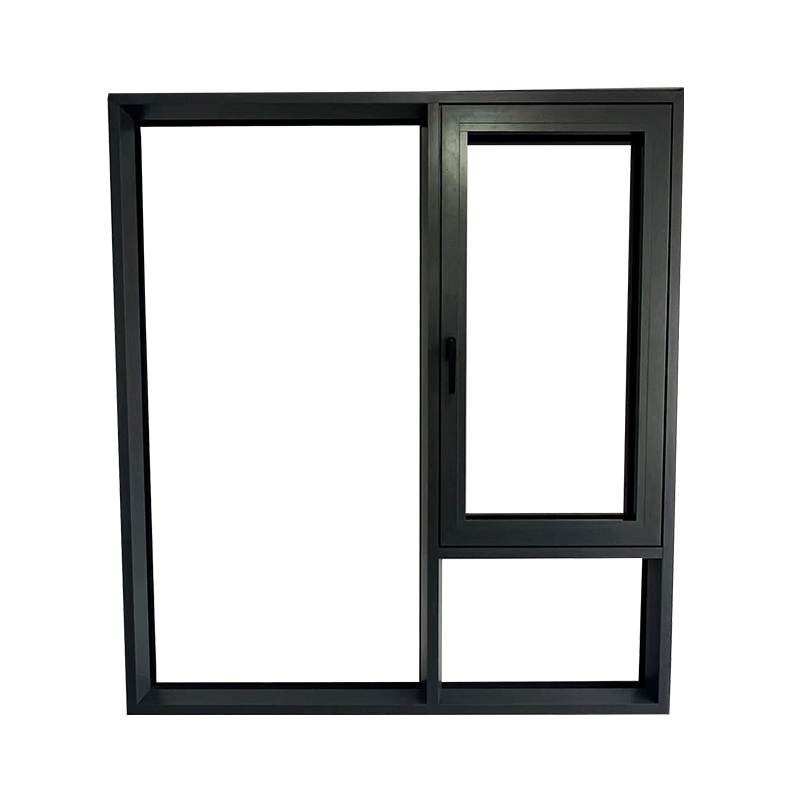Send inquiry
When it comes to improving the energy efficiency, comfort, and durability of a home, homeowners often focus on insulation, heating, and cooling systems. However, one area that is often overlooked is the windows. Traditional windows can be a significant source of energy loss, allowing heat to escape in winter and entering unwanted heat in summer. This is where aluminum storm windows come into play. These windows offer an effective and affordable solution for enhancing the performance of existing windows, providing better insulation, noise reduction, and protection against harsh weather.
Aluminum storm windows are secondary windows installed on the exterior or interior of existing windows to provide additional insulation, protection, and weather resistance. Unlike traditional windows, which typically consist of a single layer of glass, storm windows have an extra layer of protection, often made from glass or clear acrylic. These windows are designed to act as a barrier against the elements, preventing drafts, improving insulation, and reducing energy costs.
While aluminum is the primary material used for the frame, storm windows can be made from a variety of materials for the glass or acrylic insert, such as tempered glass, polycarbonate, or polyvinyl chloride (PVC). Aluminum frames are favored for their strength, durability, and resistance to corrosion, making them an ideal choice for storm windows.
Aluminum storm windows function by adding an extra layer of protection to existing windows. They work in tandem with the main windows to create an insulating air space between the two layers. This additional layer helps reduce heat transfer, making the interior of the home more comfortable while reducing the energy required for heating and cooling.
When the storm window is installed, it forms a sealed air gap between the window pane and the storm window. This layer of trapped air serves as a natural insulator, helping to prevent heat from escaping in the winter and blocking unwanted heat from entering during the summer. As a result, homes with storm windows experience more stable indoor temperatures throughout the year.
Aluminum storm windows help protect the primary windows from the elements, such as rain, snow, and high winds. By serving as a barrier, they shield the main windows from moisture damage, which can cause wood frames to warp, glass to break, or seals to deteriorate. This extends the lifespan of the original windows and reduces the frequency of costly repairs or replacements.
In addition to improving energy efficiency, aluminum storm windows also provide sound insulation. The air space between the storm window and the main window helps to absorb and dampen outdoor noise. This can be particularly beneficial for homes located in noisy urban environments or near busy roads, providing a quieter indoor environment.

Many aluminum storm windows are designed to filter out harmful UV rays from the sun, which can cause fading and damage to furniture, flooring, and fabrics over time. By blocking a significant portion of UV radiation, these storm windows help protect your home’s interior from sun damage while maintaining natural light.
One of the biggest advantages of aluminum storm windows is their ability to improve the energy efficiency of a home. According to the U.S. Department of Energy, storm windows can reduce heat loss by up to 50% when properly installed. By minimizing heat transfer through windows, homeowners can enjoy lower heating and cooling costs, making storm windows a smart investment for long-term savings.
Aluminum is known for its strength and resistance to corrosion, making it an ideal material for storm windows. Unlike wood frames that can warp, rot, or require frequent painting, aluminum frames are low maintenance and long-lasting. Aluminum storm windows can withstand harsh weather conditions, including high winds, heavy rain, and freezing temperatures, without deteriorating or requiring extensive upkeep.
Aluminum storm windows are a more affordable alternative to replacing entire windows. Installing storm windows is often significantly cheaper than purchasing new double- or triple-pane windows, yet they provide similar benefits in terms of insulation and energy efficiency. For homeowners looking to improve their home's energy performance on a budget, aluminum storm windows offer an excellent solution.
By reducing the need for heating and cooling, aluminum storm windows help lower a home’s overall energy consumption. This contributes to a smaller carbon footprint and promotes sustainability. Furthermore, the long lifespan and low maintenance of aluminum storm windows reduce the need for frequent replacements, leading to less waste in landfills.
Modern aluminum storm windows come in a range of styles, finishes, and colors, allowing homeowners to choose an option that complements their home’s aesthetic. Whether the home has a traditional, contemporary, or rustic look, there are storm window designs that can enhance the curb appeal without sacrificing performance. Additionally, the sleek aluminum frame provides a clean, stylish look that blends seamlessly with the existing windows.
Aluminum storm windows are suitable for a variety of applications in both residential and commercial buildings. They are particularly effective for older homes with single-pane windows or for homes located in areas with extreme weather conditions. Here are a few considerations when installing aluminum storm windows:
Before installing storm windows, it is important to ensure that they are compatible with the existing window frames. Professional installation can help determine the best fit and ensure a proper seal to maximize insulation and protection.
Aluminum storm windows can be either permanently installed or temporarily mounted, depending on the homeowner's needs. Temporary storm windows are typically installed during the colder months and removed in the spring, while permanent storm windows are fixed in place year-round.
Storm windows are available in a variety of styles, including full-frame and insert models, as well as options for sliding, casement, or double-hung windows. The style of the window will affect both the installation process and the overall appearance of the home, so it is important to choose the right design for your property.